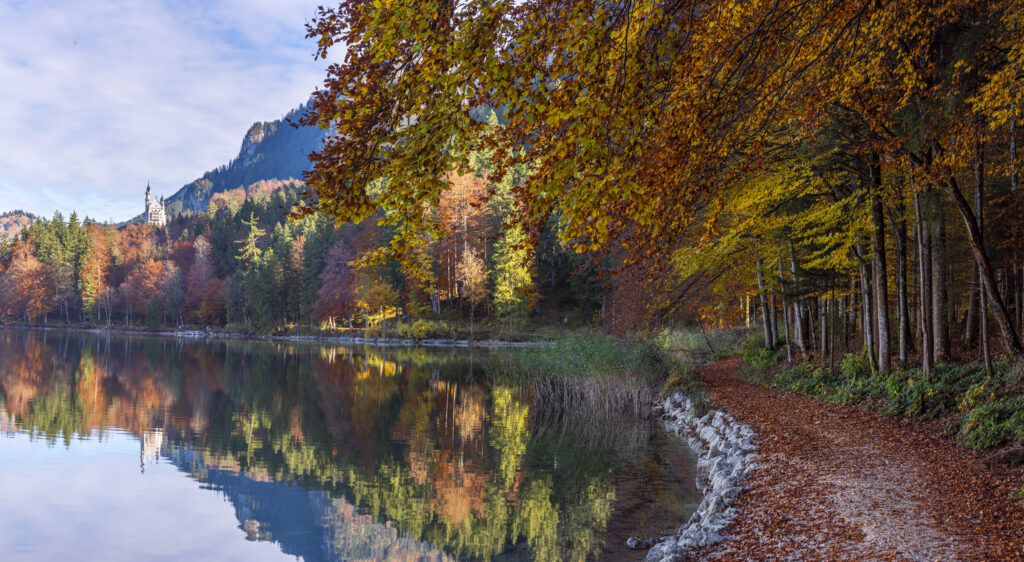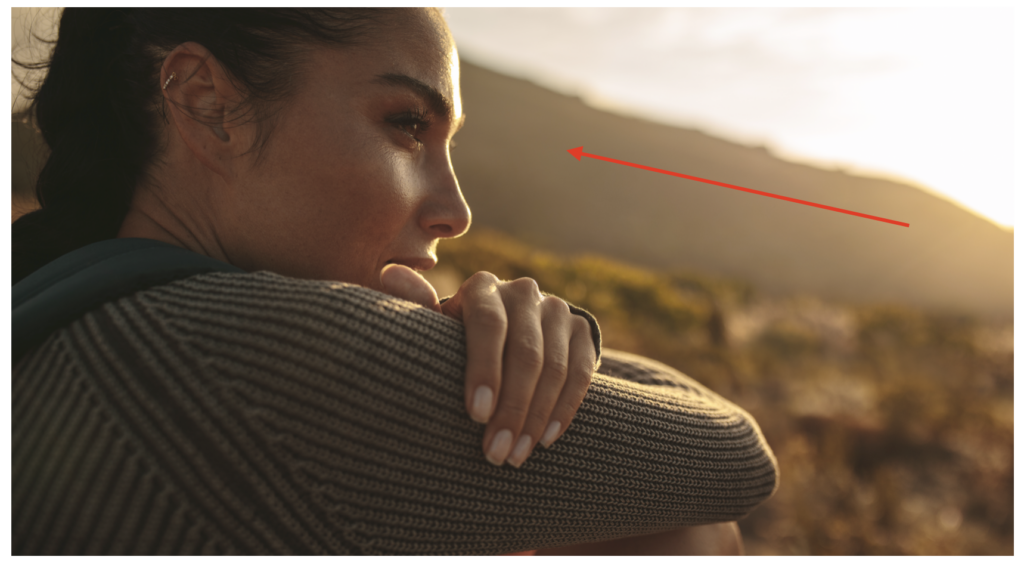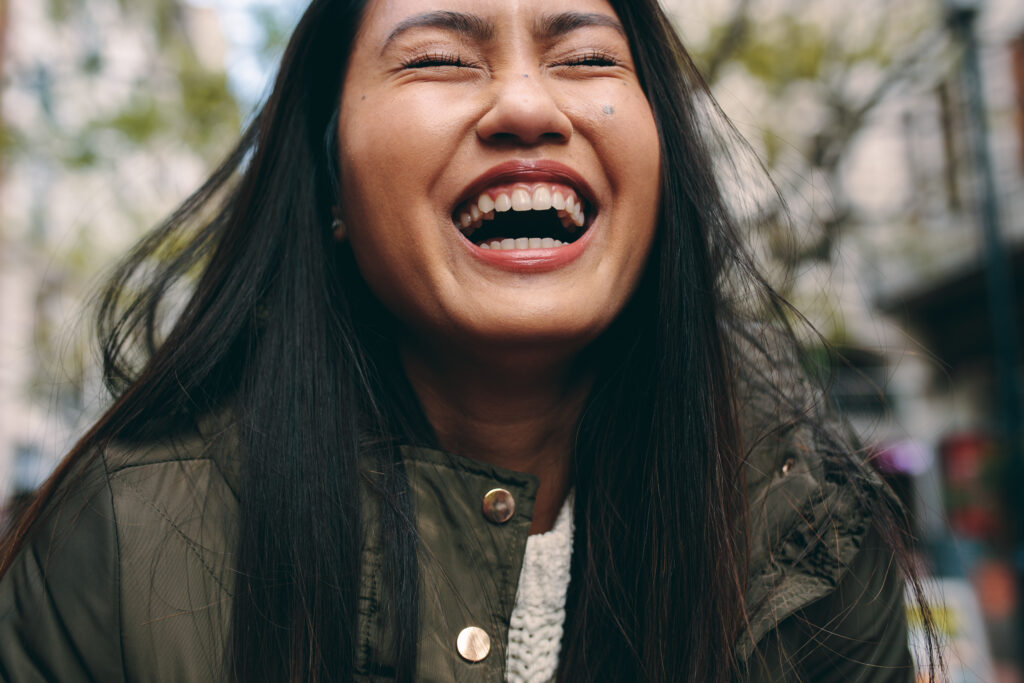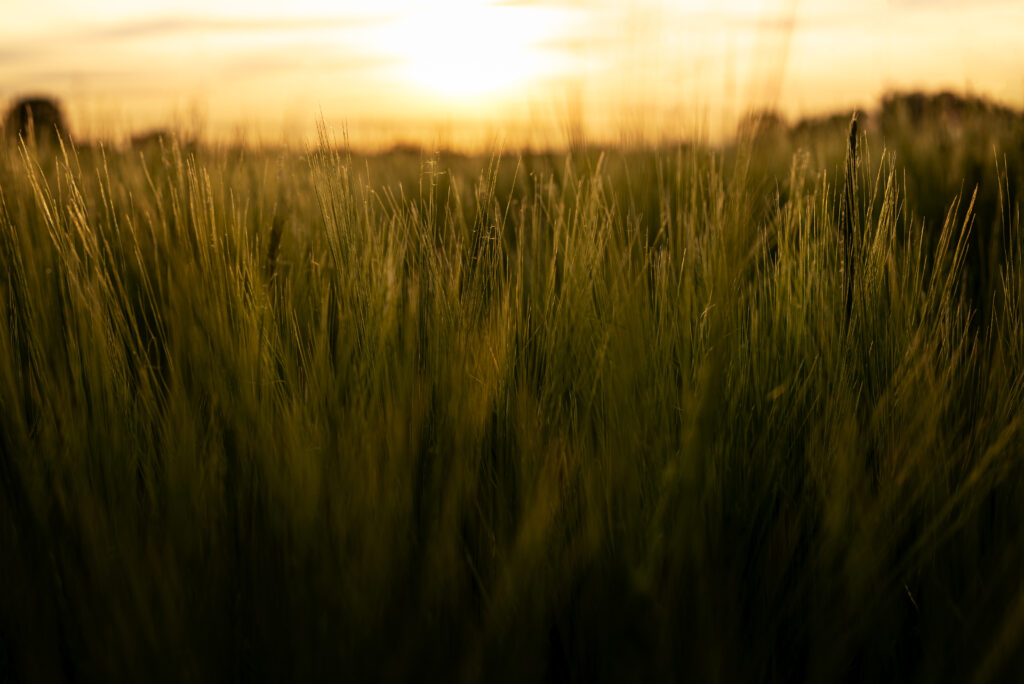Follow these ten easy compositional tips that anyone can use to instantly improve your photos.
1. Declutter
When you look at an image, is your attention drawn to the the main subject or is there something else in the frame that catches your attention first? If there is visual clutter, attention will be drawn to irrelevant portions of the photo. Simple compositions with only a few elements tend to have more impact.

Photo by Jacob Lund Photography
To create focus and attention on the important parts of the photo, simply move your subject away from any background distractions or remove objects that you don’t want to have in the photo. Alternatively, as the photographer, try physically moving around the subject until you are satisfied with the background.
This tip can also create copy space in an image, which is useful when photographing for stock photography. Many people utilize copy space on photos to overlay text when creating slides for presentations.

2. Use the Rule of Thirds
An off-center composition is pleasing to the eye, which can be achieved by using the rule of thirds. To use this composition technique, imagine dividing an image into 9 segments by using two vertical and two horizontal lines. One of the best ways to train your eye to see the rule of thirds is to use the built in overlays grids on the viewfinder or display of your phone or camera.

To use the rule of thirds, place the most important part of your photo in the left or right 1/3 of an image and leave the other 2/3 more open. The relationship between negative space and the subject creates a natural focal point and creates more tension and energy in the photograph.
When photographing people or animals, place your subject’s eyes at one of the intersection points for ultimate impact.

To use the rule of thirds guideline for landscape images, simply align the horizon with either the upper or lower dividing line. This will give the sky or the ground a 1/3 or 2/3 portion of the image, which creates interest and balance.
Using the rule of thirds can be another great way to create copy space.


Photo (L) by Carol M. Highsmith // Photo (R) by Carol M. Highsmith
3. Symmetry
Utilizing symmetry as a compositional technique in photos creates a sense of harmony, balance, and proportion.
There are several types of symmetry that you can work with, one of which is called reflective symmetry. Reflective symmetry is when parts of your composition mirror other parts. This symmetry can be created either horizontally or vertically.
With vertical symmetry, imagine folding the scene in half down the middle as you would with a piece of paper and observe if there are repeating elements on either side of the image.


Photo (L) by Simone Hutsch // Photo (R) by Simone Hutsch
Vertical symmetry can also be captured when the two halves are not exactly mirrored, but have a balance of similarity on either side of the vertical axis.
Now imagine folding a the scene in half horizontally — an image where the upper and lower halves mirror each other or have repeating elements above and below the horizontal “fold.” A common example of horizontal symmetry can be found in images with lake reflections.

4. Keep Your Lines Straight
Ensuring that horizontal and vertical lines are straight in your photos is one of the easiest and quickest ways to upgrade your work. The human eye wants to see straight lines — which is why we’re very inclined to straighten out a crooked painting on the wall. When a line isn’t straight in a photo, it may feel off without the viewer knowing why it feels off.
The easiest way to get straight lines is to once again utilize the grid in the camera’s viewfinder or on the display of your phone’s camera.

As you can see below, utilizing the grid ensures that the lines of the couch, the wall and the painting are straight.

In landscape images, the grid will help keep those horizons straight (while also serving double duty to help you create a composition using the rule of thirds). Straightening a crooked horizon is a sure fire way to take your image to the next level.

5. Use Leading Lines
Leading lines is a compositional technique in which line shapes are framed and positioned by the photographer in order to draw the viewer’s eye toward the intended subject in the photo.
This photo has several interesting examples of leading lines. Not only are there diagonal lines on the ground and on the roof of the tunnel — there are curved leading lines created by the circular frame of the structure.


Pool lane lines, diagonal in the photo below, point your attention directly to the swimmer.

Photo by Jacob Lund Photography
You don’t have to have obvious geometric line shapes to utilize this technique to improve your composition.
In the photo below for example, the mountain ridge creates a leading line that draws your attention directly to the subject’s eyes.

Photo by Jacob Lund Photography
The curved road both behind and in front of the biker creates the line that guides the viewer’s gaze to the subject’s face.

The more you look for leading lines, the more you’ll see — and the more you can start incorporating them into your photos.
6. Framing
Framing in photography is exactly what it implies: creating a visual frame around your subject using elements within the scene. Framing draws attention to the important area of the photo by emphasizing the subject.
Framing can be created with both human made and natural elements. Architectural elements such as doorways, window panes and arches can create a strong, powerful frame for your subject.

Photo by Jacob Lund Photography
Natural elements such as foliage, trees and branches can create a softer frame that also adds layers and depth to an image.

Even chairs can create perfect frames!


Photo (L) by Anna Foytma // Photo (R) by Carina Koenig
Framing can also be created with color: the white, triangular portion of the tent against the teal perfectly frames this camper’s happy face.

Photo by Jacob Lund Photography
7. Get Close and Fill the Frame
Filling the frame means making your subject a large proportion of the image. This is easily done by getting physically close to your subject, simply putting your camera closer to the subject and/or walking closer. If you have a zoom or macros lens, you can utilize their capabilities to fill the frame.
Filling the frame is a great tool to use in stock photography as it creates immediate intimacy and connection between the viewer and the subject. The viewer is immediately able to experience the feelings and emotions of the photo.

Photo by Jacob Lund Photography
Filling the frame automatically eliminates distractions, removes negative space and places the subject front and center. This technique also allows the viewer to explore the detail of the subject that wouldn’t be possible if photographed from further away.


Photo (L) by Yes Photographers // Photo (R) by Suzanne Strong
This cat not only fills the frame, he fills the box!

8. Rule of Odds
The human brain is wired to organize subjects or elements into pairs when there are is an even number in an image. When there is an odd number of elements, it creates a composition that makes the viewer’s brain work a little harder and look a little longer.

Photo by Suzanne Strong for Noun Project
An easy way to practice the rule of odds is experiment with still life images. Take a shot with one object, then add one more for each shot or until you get to five objects in the frame. Ask yourself which images you find to be more pleasing, the images with odd or even numbers of elements. You can even test this out on your friends and family by asking them which images they like best. Likely, they will pick the photos with 1, 3, or 5 elements.


Photo (L) by Bogdan Dreava // Photo (R) by Zamurovic Brothers
The rule of odds is a great compositional technique to use with people as well. The viewer’s eye is allowed to flow around the image more easily and leads to a greater feeling of harmony.

Photo by Jacob Lund Photography


Photo (L) by Jacob Lund Photography // Photo (R) by Jacob Lund Photography
9. Let the Scene Unfold
One of the best ways to upgrade photos with people is to look for and capture authentic moments. A great way to practice this is to quietly observe emotions, interactions and connections between people — without your phone or camera. The most authentic moments and interactions usually happen in the split second when people forget that the camera is there. Pushing the shutter at that split second of emotion is called the “decisive moment,” a term coined by Henri Cartier-Bresson, a forefather of street and reportage photography.
Step back and let the scene unfold. When you can start recognizing those fleeting moments, get your camera out and start shooting.

In stock photography, there has been a huge shift toward real and authentic images in the last several years. Users no longer want to use staid, forced and outdated stock photo styles.


Photo (L) by Paulo Sousa // Photo (R) by Paulo Sousa


Photo (L) by Suzanne Strong // Photo (R) by Suzanne Strong
10. Simplicity
If all else fails, fall back on the easiest rule: Keep it simple.

Interested in joining our community of photographers and contributing to Noun Project? Submit your photos and explore our guide to creating authentic, inclusive images.
Click here to download FREE photo shoot production document templates.
Plan your photo shoots out for the year with our free monthly photo shoot guide.
For more photography tips, check out our blog.
Sign up for our photo newsletter to make sure you never miss out on our photography content.





